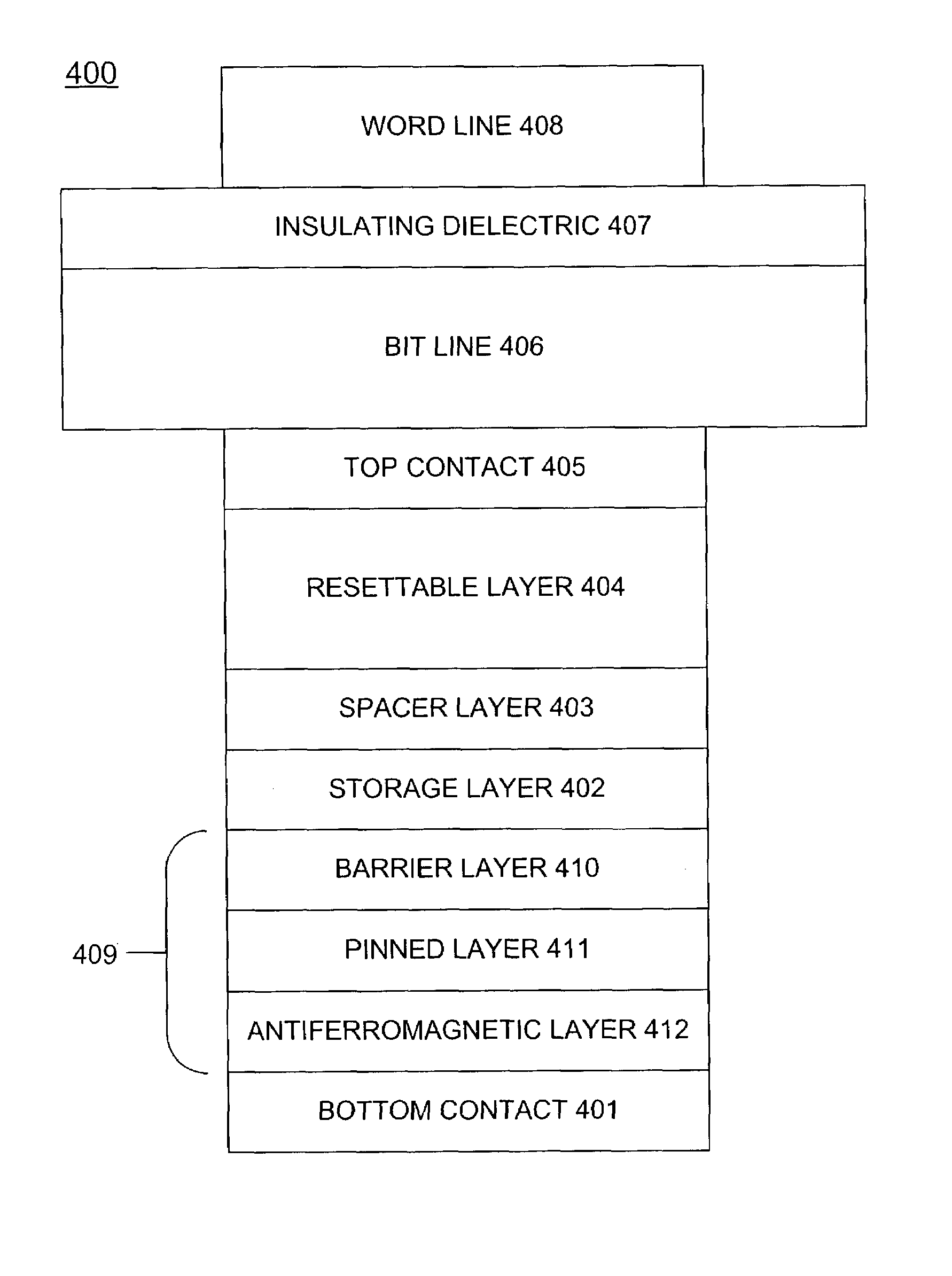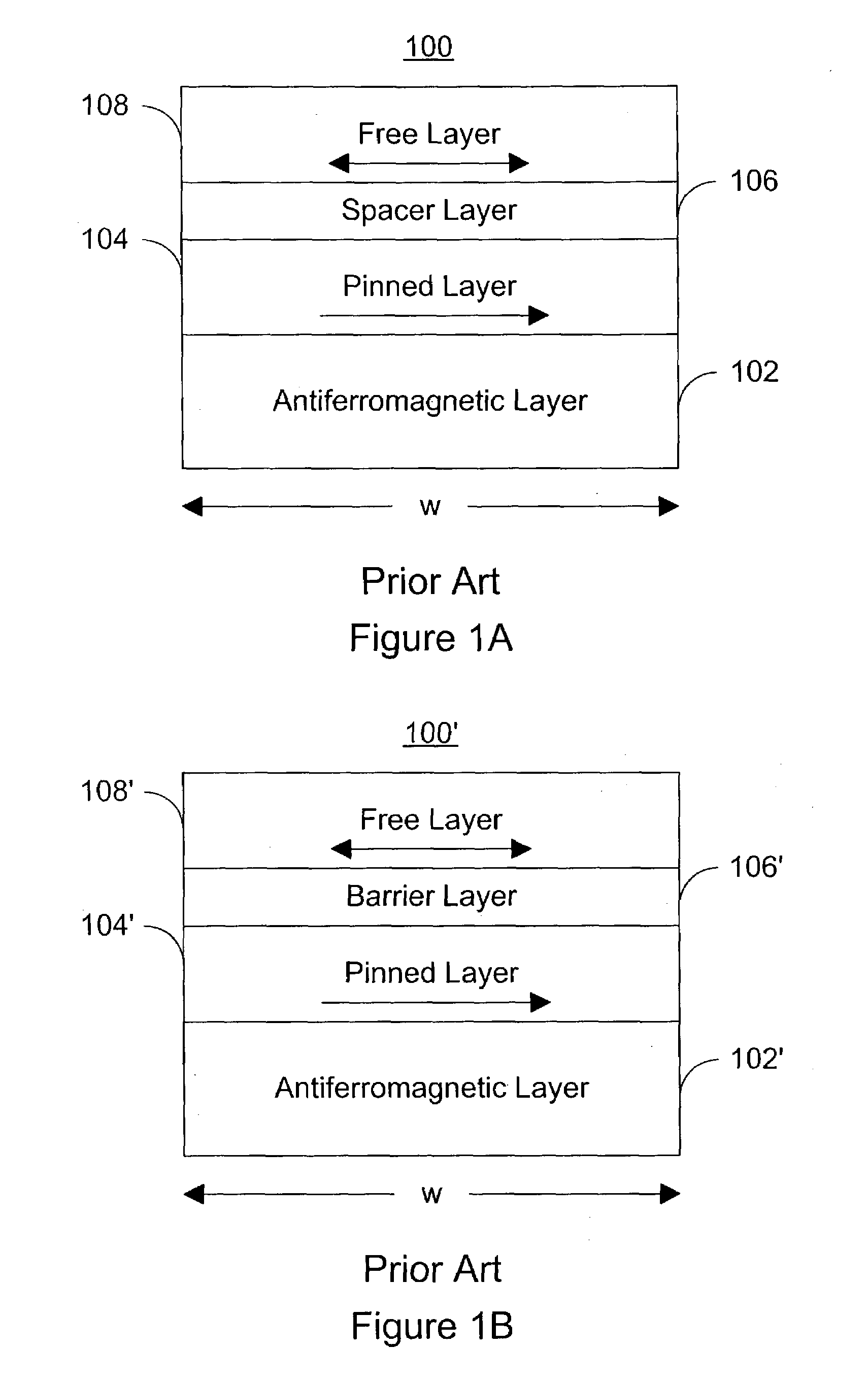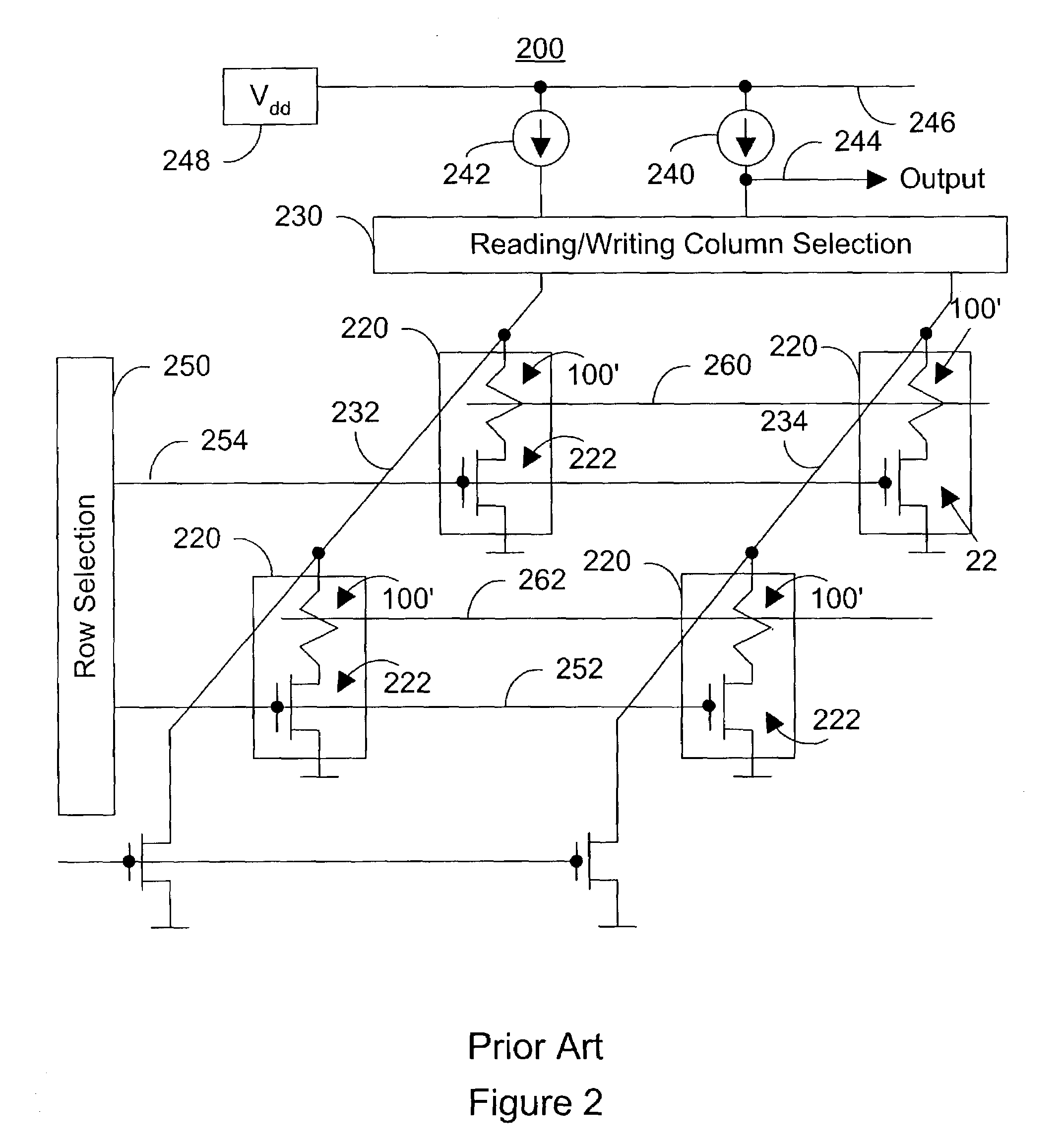Spin-transfer multilayer stack containing magnetic layers with resettable magnetization
a multi-layer stack and magnetic layer technology, applied in the field of magnetic memory systems, can solve the problems of increasing physical area and complexity, increasing power consumption and heating, and affecting the density of memory cells at higher density
- Summary
- Abstract
- Description
- Claims
- Application Information
AI Technical Summary
Benefits of technology
Problems solved by technology
Method used
Image
Examples
Embodiment Construction
[0053]The present invention provides a spin-transfer stack device having a magnetization of the free or storage layer that can be switched back and forth (and / or to any angle) using only the forward-bias switching mode, thereby minimizing the switching current density of a spin-transfer stack device. The present invention also provides a spin-transfer stack device that allows cell writing (i.e., switching) using a uni-directional current and using uni-directional elements, thereby decreasing process complexity, reducing cell size and / or enhancing performance. Additionally, the present invention provides a spin-transfer stack device capable of storing more than one bit per device (or cell), thereby increasing memory density.
[0054]The present invention provides a spin-transfer stack device having a pinned layer, referred to herein as a “resettable” layer, that is ferromagnetic, ferrimagnetic or sperimagnetic. The magnetization of the resettable layer should easily be set in a desired ...
PUM
 Login to View More
Login to View More Abstract
Description
Claims
Application Information
 Login to View More
Login to View More - R&D
- Intellectual Property
- Life Sciences
- Materials
- Tech Scout
- Unparalleled Data Quality
- Higher Quality Content
- 60% Fewer Hallucinations
Browse by: Latest US Patents, China's latest patents, Technical Efficacy Thesaurus, Application Domain, Technology Topic, Popular Technical Reports.
© 2025 PatSnap. All rights reserved.Legal|Privacy policy|Modern Slavery Act Transparency Statement|Sitemap|About US| Contact US: help@patsnap.com



